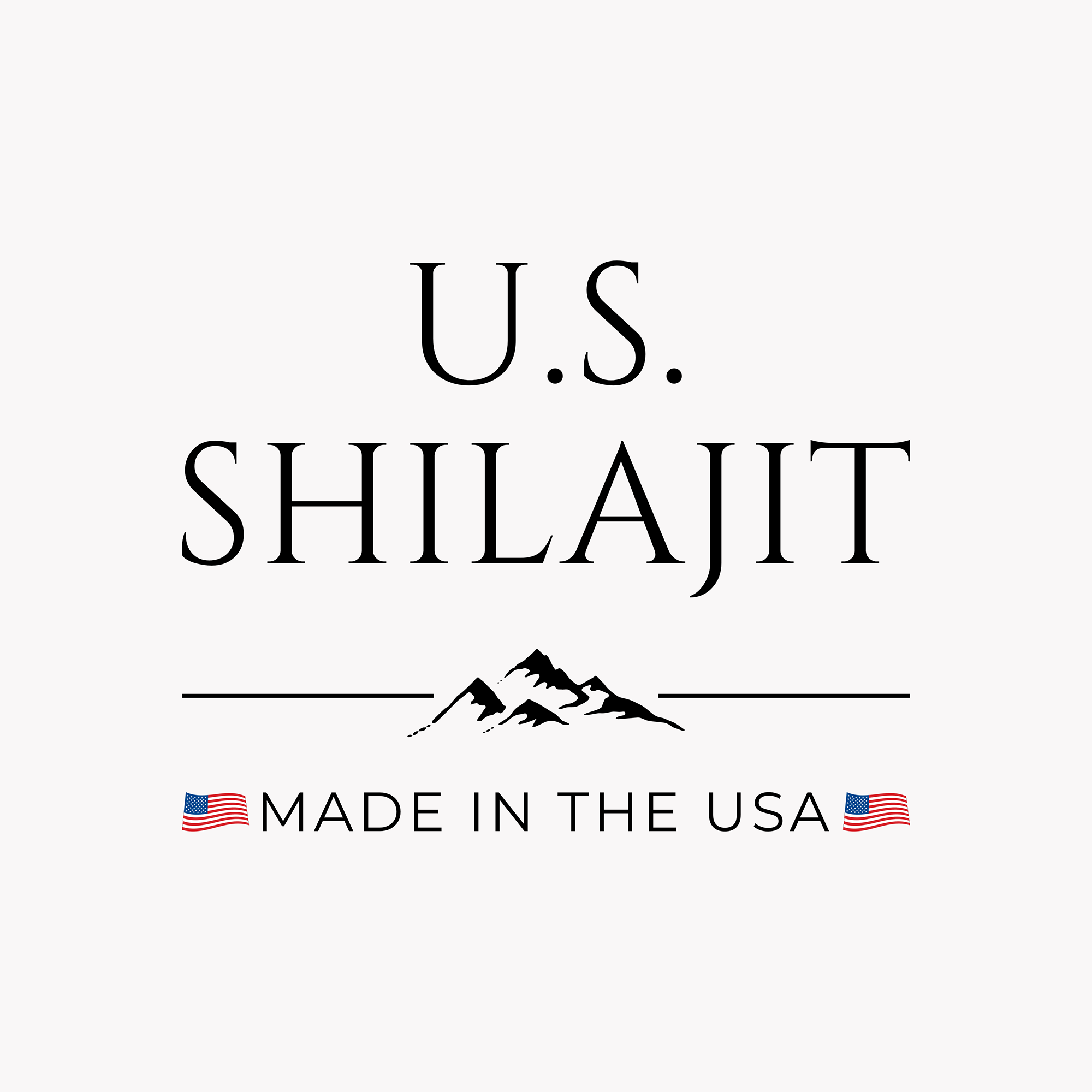Q&A | Lab Tests
- Is Shilajit safe?
If sourced from unpolluted areas, purified to remove contaminants, with strict quality control standards, then absolutely, yes.
Check out our test results! We're VERY proud of our purity, ESPECIALLY considering our shilajit is NEVER heat processed.
Also, we pass California's Prop 65 standards for heavy metals.

- Who should not take Shilajit.
- What is Shilajit?
Shilajit [she-luh-jeet] is Sanskrit for "Conqueror of mountains, Conqueror of the Rocks, Destroyer of Weakness." It is one of the rarest substances on Earth and has been used as a staple of Ayurvedic medicine and diet for thousands of years. It is made from organic, decomposed ancient plants.
- How is Shilajit made?
It begins as plants high in the mountains that naturally break down and decompose. That organic material gets absorbed into the rock of the mountain and then, across thousands of years, gets compressed by the pressure of the rock and is eventually exudated onto the face of the mountain as a resin that hardens into a rock-like substance.
- What are the benefits of Shilajit?
Shilajit is known as a "panacea:" A remedy for all illnesses and maladies.
-Balances Hormones
-Raises Iron Levels
-Clean & Natural Energy (not a stimulant)
-Enhances Sleep
-Increases Memory & Brain Function
-Heals Cognitive Degenerative Diseases
-Alleviates Pain Response
-Increases Nutrient Absorption
-Anti-Inflammatory
-Aids Menstrual Cramps
-Anti-Viral
-Bone Healing
-Increases Oxygen Delivery
-Increases Athletic Performance
-Powerful Detoxer
-Enhances Cellular Function
-Mitigates Anxiety
One of the things we LOVE about Shilajit is that once you start your research on it, you realize it's efficacy isn't a matter of dispute almost anywhere (AS LONG AS IT IS HIGH QUALITY SHILAJIT.) From over 3,000 years of ancient Ayurvedic wisdom to modern western science, the only dispute is whether it's long lists of benefits is limitless or not.
- What form is best? Resin, liquid or powder?
There seems to be a lot of confusion over the differences between powder, liquid or resin forms of shilajit. We don't like confusion, so here is a proper explanation of the differences between the 3 and how they are made. We will stick with methods used by reputable companies striving to provide you with a quality product.
(1) The first step of purifying is to dissolve shilajit in water. Any company that does not do this should be avoided. In the wild, shilajit is hard and dry (like a rock) and is rarely more than 40% actual shilajit. The rest is metal toxicity, debris and sediments that are contaminated with bacteria.
(2) Filter out the contaminants. Every reputable company does this to one level or another. Some companies simply let contaminants settle and then pour the dissolved shilajit through a simple filter to get larger floating contaminants. Some get more sophisticated with higher quality filters that take out smaller contaminants.
(3) Regardless of whether your finished product is a resin, liquid extract, or powder, it is important to understand that every quality shilajit manufacturer will go through this liquid extract stage. From this point on is where the manufacturing processes really begin to take on different forms.
Some people will use heat to destroy any harmful bacteria and sell the liquid extract as is from that point in the process. While being a minimally processed form, the water to shilajit ratios vary from batch to batch, and typically receives a lot of complaints about being too "watered down."
Others will dehydrate that liquid down to a resin consistency. Whether very slowly out in the sun, quickly in a boiling pot, or somewhere in-between, heat is used to remove water until the desired consistency is achieved. It is important to understand that the thickness of the resin is simply determined by how much liquid is in it, and is in no way a factor of the quality of the actual shilajit. Most resins are 70-85% shilajit, the rest is water.
Powdered shilajit, as long as it is authentic, has simply had 95+% of its water removed through a variety of possible dehydration methods and then ground into a fine powder.
At U.S. Shilajit, we have found liquid extracts to be the most convenient way to use shilajit. Powders can also be great, especially if you want the most concentrated form of shilajit possible. Resin, although very unique and cool looking, is quite inconvenient to use and nearly impossible to control the dosage amount. Taking a scoop from one side of even a very small resin jar may give you 80% of the fulvic acid, while a scoop from the other side gives you 20%.
So if you like making a mess with each serving, not having standardized doses and don't mind heat processing, then resin form is for you.
But if the world's purest, most potent, and most user friendly form of shilajit is what you're after, then U.S. Shilajit's liquid extract has got what you're looking for.
- Why do you suspend your shilajit in colloidal silver?
We mix our freeze-dried Shilajit powder with a 10ppm colloidal silver. This silver only has two ingredients: silver and purified water. Colloidal silver has excellent anti-bacterial and anti-viral properties. We add it as an added layer of protection against bacterial growth on the lid and bottle while the shilajit is being used. The amount of silver in one serving is about 5% of what you would typically get from a long term daily dose of a typical colloidal silver product.
- My dropper is not working. Why?
